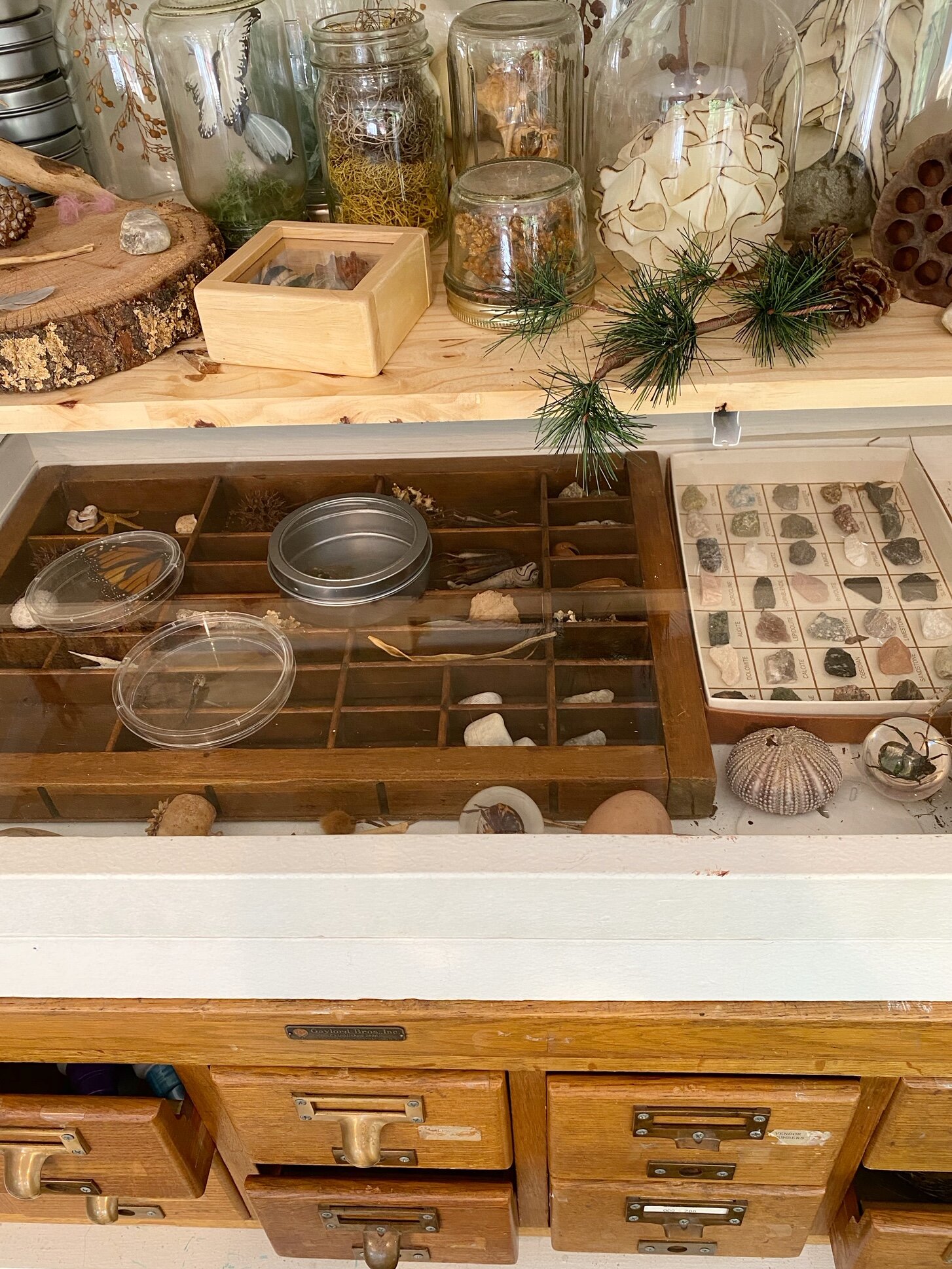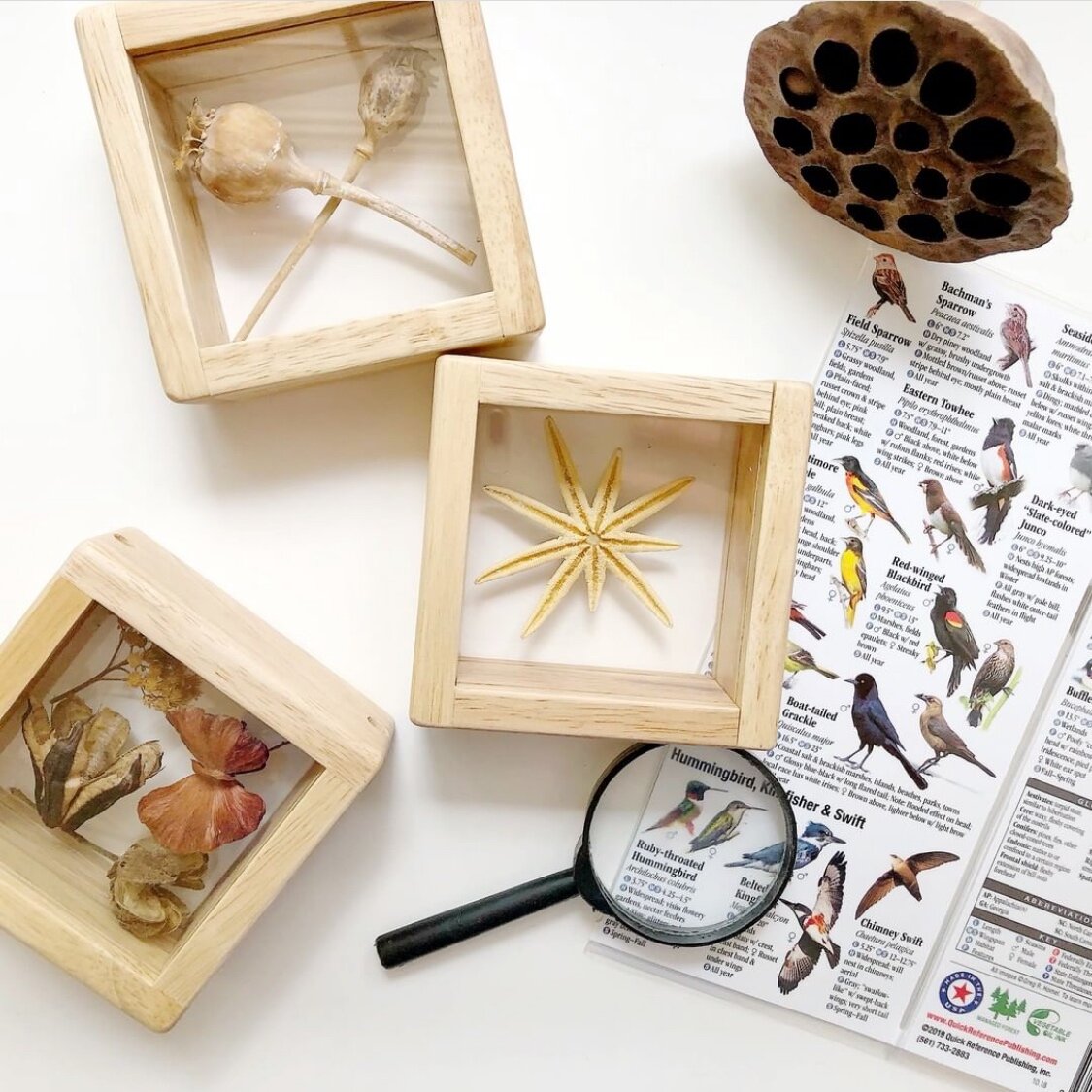Favorite Science Tools
Hi Kid Labbers,
I’ve been getting some questions about science resources so here’s a roundup of some of my favorites. We use a lot of these at Kid Lab, but I also use many in my own home (three cheers for Christmas wishlists!)
My dad was a public school science teacher, so I grew up thinking dissecting frogs, watching National Geographic and sketching everything I saw was not only normal, but super cool. (ha!) Fast forward to now, and you’ll still find me binge watching Planet Earth, observing specimens under a microscope and drawing inspiration from scientific discoveries in my work as an artist and educator.
Over the years, I’ve collected some great tools to help engage budding scientists. Many of these have been generously donated to Kid Lab, but others have been purchased or thrifted. Whenever possible, I recommend opting for a high-quality tool vs a cheaper plastic version. It’s important not to “dumb-down” the inquiry process for a child. When a spark is lit, they need access to tools to follow that interest. Amazon list with most of the items mentioned below.
Favorite microscope
My daughter just got this Stereo microscope for her birthday and we absolutely LOVE it! She pulls it out almost every day, and since it’s binocular, it’s easy for her to quickly see the specimens. We also like that it comes with multiple tools to help dissect and prepare slides. This is hands-down my favorite (recent) addition to our personal collection, and I hope to purchase one for Kid Lab soon!
Pocket microscope
This is a fun, lightweight tool to throw into your backpack or outdoor adventure toolkit. We have both a hand-held, and an iPhone adapted one that’s especially fun when you want to play around with microphotography using your iPhone.
Curio cabinet
Any segmented box will work well to display your nature treasures. At Kid Lab, we have an old letterpress tray, a large jewelry box and an old library card catalog that was donated to us. Sometimes, trays or boxes like this can be found at thrift stores or antique shops, or this one looks like it would work well too.
Curio box
You can usually find a small unpainted wooden box like this from a craft store for just a few dollars. Larger ones are available on Amazon.
Adventure Toolkit
About 2 years ago, I found this box at Ikea and fell in love! We use this for our field studies (my daughter calls it her “adventure toolkit”) and we throw everything in we need for our field studies: binoculars, laminated guides, bug viewer, magnifying glass, nature journal, bug spray… and we like that you can store treasures in the top see-through trays! You could even throw in your paint supplies for a plein air session. These make for fun gifts!
Magnifying glass
There are a lot of options on the market. We usually have 2 kinds on hand at the Lab to accommodate varying ages and different uses: a magnifying sheet, and a glass hand-held with higher magnification.
Binoculars
Again, lots of options out there. For a child 5+, we recommend this brand because it’s higher-powered, durable yet still lightweight enough for a small child to handle.
Specimen boxes
These are fun little viewing boxes that often come with interchangeable lids in varying magnifications. They’re fun to use for quick studies.
Display boxes
These display boxes are such fun gifts to give to nature-loving kids because they can put their treasures inside and view them anytime. They’re very sturdy (virtually indestructible) so we love to use them with toddlers too.
Bug viewer
We’ve had multiple bug catchers and viewers over the years, but we like this one the best. It’s lightweight, offers a few viewing angles and it’s easy to wipe clean.
Field Guides
We have a lot of guidebooks and resources we love and recommend. (see our IG story highlights for more) It’s hard to narrow it down, but here are a few of our top picks:
Bug box and Guide This one is fun because it comes with a simple guidebook and identification checklist for common bugs you’re likely to find outside.
Fandex field guides: we love the skinny format and that you can fan them out and hold them up to things for easier identification. There’s a whole series of these - birds, trees, wildflowers, etc.
Regional wildlife guide: find ones specific to your area to make nature walks more fun
What are your favorite tools? I’d love to know any that have worked well for your family!
Shannon








